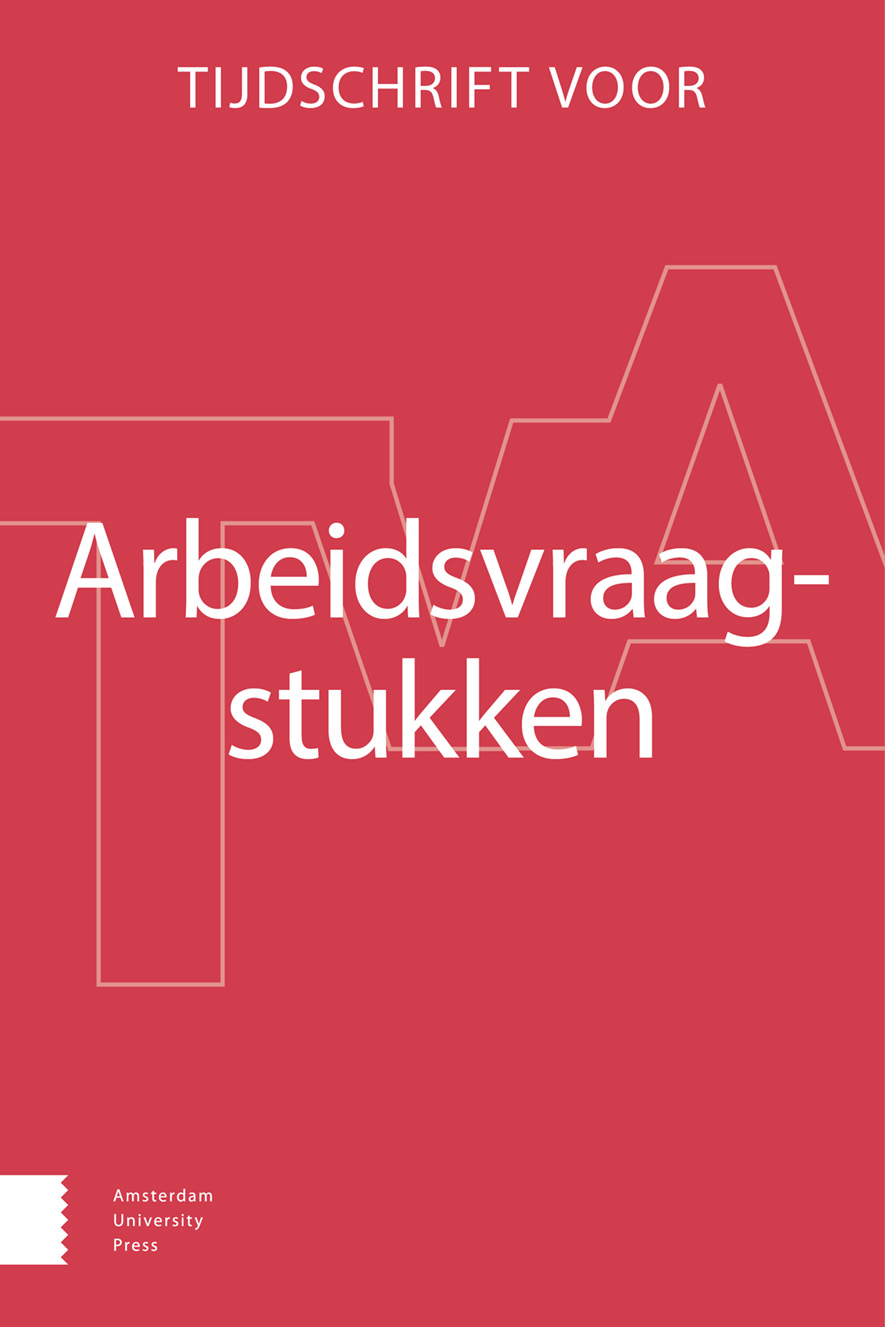-
oa Hoe pakt de hogere AOW-leeftijd uit?
Kenmerken van werkende zestigplussers anno 2019
- Amsterdam University Press
- Source: Tijdschrift voor Arbeidsvraagstukken, Volume 37, Issue 2, Jan 2021, p. 137 - 160
Abstract
Door de recente verhoging van de AOW-leeftijd in Nederland is een nieuwe groep ontstaan: de betaald werkenden tussen de oude AOW-leeftijd van 65 jaar en de nieuwe AOW-leeftijd, de ‘65-pre-AOW’ers’. In een eerste kenschets van deze groep vergelijken wij hun werk- en individuele kenmerken met die van de 61-64-jarige werkers, de ‘61-64’ers’, en de werkers boven de nieuwe AOW-leeftijd, de ‘post-AOW’ers’. In 2019 verschaften 764 61-70-jarige deelnemers aan de voor Nederland representatieve Longitudinal Aging Study Amsterdam gegevens over sociaal-demografische kenmerken, financiële situatie, gezondheid, werkcapaciteit en werkkenmerken. Het aandeel werkenden verschilde duidelijk naar leeftijd: 67% bij de 61-64’ers, 48% bij de 65-pre-AOW’ers en 16% bij de post-AOW’ers. Ook het gemiddeld aantal werkuren per week verschilde en bedroeg 31, 27 respectievelijk 18 uren. Voor de werkende 61-64’ers en 65-pre-AOW’ers was hun financiële situatie een belangrijke drijfveer om door te werken. De werkende 61-64’ers en 65-pre-AOW’ers hadden minder gezondheidsbeperkingen dan de werkende post-AOW’ers, maar de werkende post-AOW’ers rapporteerden een hogere werkcapaciteit. De werkende 65-pre-AOW’ers vormden een minderheid van hun leeftijdsgenoten. Om te bevorderen dat meer mensen tot de AOW-leeftijd doorwerken, zeker aangezien deze hoger wordt, zouden de arbeidsomstandigheden beter aangepast moeten worden aan de werkcapaciteit in deze leeftijdsgroep.


